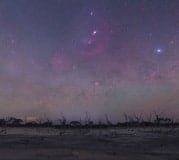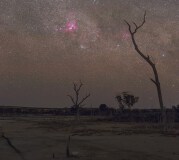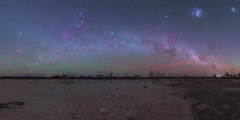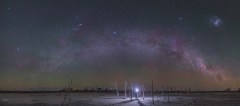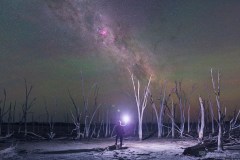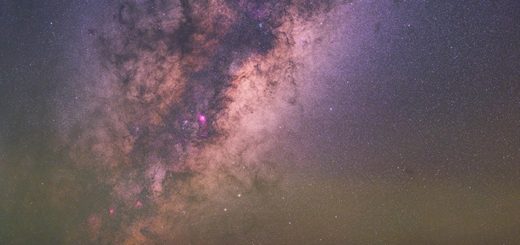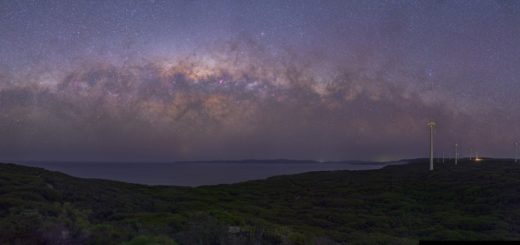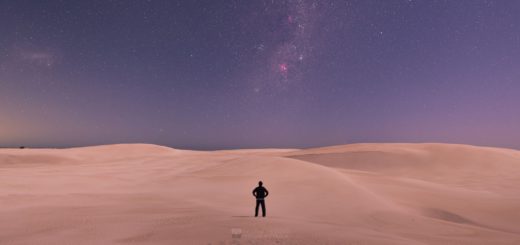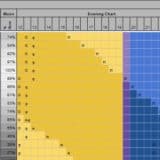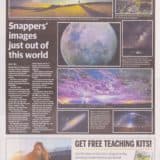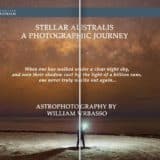Yenyening Lakes Dec18
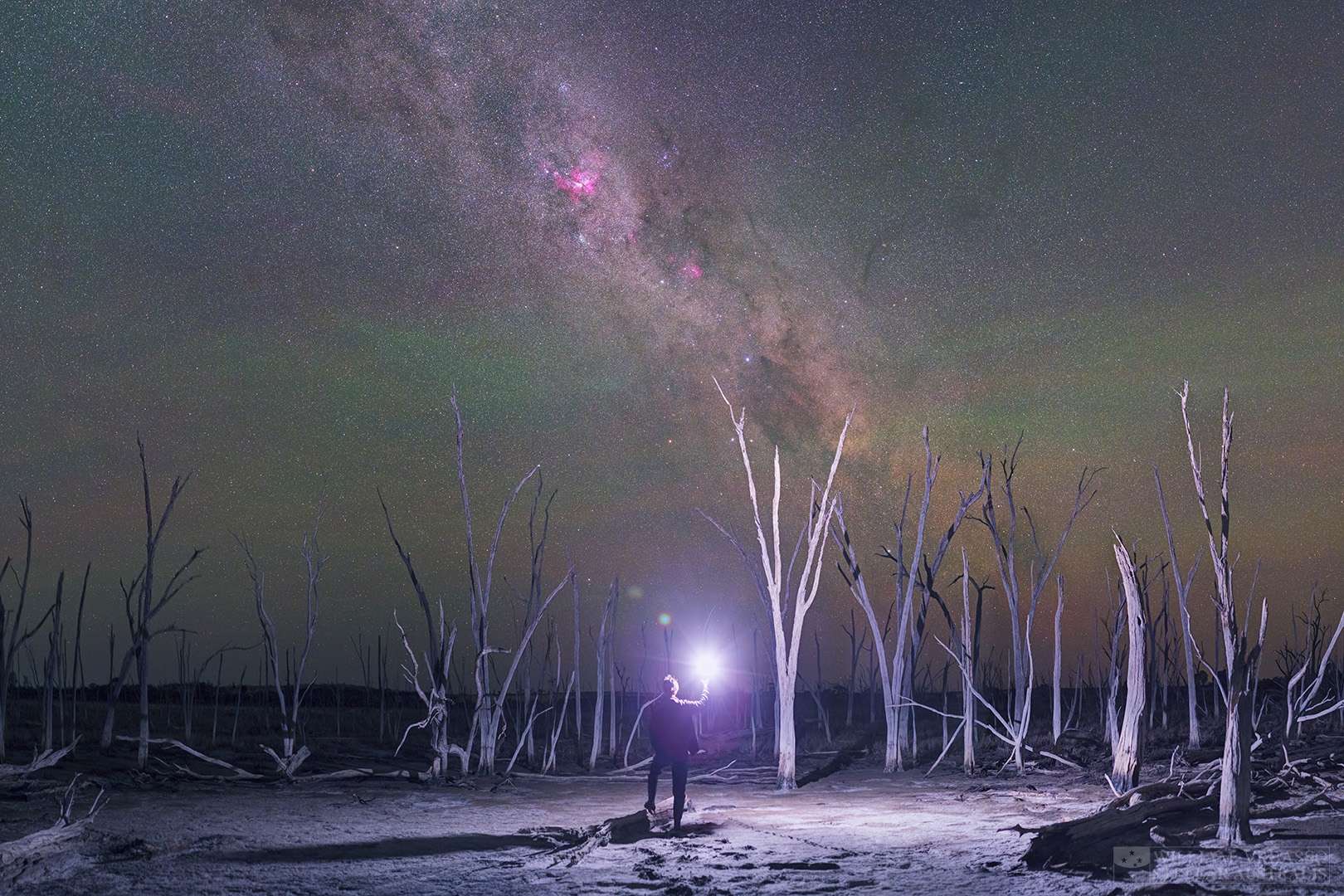
Long have I heard from local astrophotographers about Yenyening Lakes. Two hours distant from the city of Perth, these series of lakes form a chain that follows an old water course leading to the Avon river. Photos reveal a mixture of water filled lakes under dark skies, but also a landscape of dry salt beds and dead trees lining shores of stunted shrubs.
Image 1
I was determined to go, and last Saturday I loaded up my 4×4 and headed out in the early afternoon to visit this location where dark skies abound. But as I travelled a front of clouds that lay as a streak of grey white to the north threatened to cover the land. Driving into regions of the country I have not visited, my attention shifted from the rolling wheatfields and dry woods to the horizon as the line of clouds slowly rose to cover more and more of the northern skies. After an hour and a half the roads veered off from westerly to southerly, and the clouds receded in my rear view mirror – and their threatening presence did not materialise that night. With that threat gone, ahead lay the unknown of the lakes where I have never scouted before.
Image 2I first arrived a Lake Mears, about 40km east of Yenyening Lakes. Far less known than its counter-part, this lake had attracted my attention for its greater isolation and shoreline that promised views to the south, east and west. And indeed it does, with dead trees also lining some of the shore to form potentially interesting foregrounds. The lake was quite full, and with the gusty wind held little chance of providing reflections of the night sky from its surface. This was coupled with the realisation that there was no way to drive close to the western shore (the road to the lake stops on the northern shore of the lake). On foot I estimated it would take half and hour to get to the western part of the lake to capture views to the east and the rising outer plane of the galaxy – and this was too far to leave my vehicle unattended. The eastern shore is significantly closer and would likely be a great spot for the winter and spring season.
Image 3Not perturbed, I continued on in my 4×4 to Yenyening Lakes, about 45 minutes drive from Lake Mears and my primary target at any rate. Whilst most of my travel so far had been on bitumen, the roads leading to Yenyening are gravel. However, the gravel roads are well maintained and easily traverseable by even 2wd cars.
Entering the Yenyening nature reserve the main road leads to a camping ground to the east of a small lagoon. On this narrow strip of land between the small lagoon and another water filled lake is an easily recognisable water tower. But this is all that I’ve gleaned second hand from other astrophotographers, for before this I took a small, sandy track that follows another narrow strip of land to the west of the small lagoon. As I drove on this track I beheld to the east a seemingly dry lake lined with dead trees, long since overcome by the rising white salt that spells death to all but the hardiest of vegetation. In parts the dead trees were thick and dense, their trunks forming tall grey-white poles devoid of leaves or even branches. In other parts the trees had long since disintegrated leaving clear views of the white lagoon and the far shore.
Image 4I continued along the western shore of the lagoon until almost at the southern end where I stopped. From the track I could see a sparse cluster of dead trees filling the middle of the lagoon which I imagined would provide both an interesting foreground (especially when illuminated), but not so thick as to crowd out the view of the horizon. Taking the 4wd off the track, I stopped not far from the shore and off-loaded my equipment.
I soon discovered that the “dry” lagoon was in fact still wet, with its muddy bed covered by a thin dry crust of salt that even the faintest footstep would break and cover your shoes in sticky ooze. Fortunately, I packed my waterproof boots for just this eventuality, and I settled in to wait out the sunset and the coming of dark skies.
Night time, and the wind still blew in gusts from the south. The air was cool and fresh, but not cold such that I could get away with merely a light jacket. The skies are indeed dark at Yenyening but the western horizon suffers from moderate light pollution, and I mentally noted that any shots of the galaxy low on the western horizon in future visits would be fighting against the dim glow of distant towns. However, this night my gaze would be to the west and to the south. Gathering up my equipment I stepped out onto the lake and approached the cluster of trees in the middle.
Image 5After setting up and aligning my sky tracking mount I equipped my camera with an 85mm lens for I wanted to capture a closer-in view of the Orion constellation as it rose above the eastern horizon. I took a series of shots of Orion above the cluster of trees (refer image 1). After completing that series I swung the camera to the south and with the same lens I sought to image the Carina nebula region of the galaxy as is flowed slowly past a nearby tree (refer image 2). Perhaps this image might have been improved if I lined up the Carina nebula with top of the dead tree and thereby give the impression of a blossom growing from a bare branch – but this thought only came to me much later. At any rate when I look at the final image it reminds me of a blossom and petals plucked from a branch and swept along by an invisible breeze.
With my “warm up” shots completed, I switched to a 50mm lens and moved closer to the dead trees on the lagoon. Here, looking east, I did a large panorama of around 40-50 shots to capture the sweeping arc of the galaxy over the white lagoon and the silent wood (refer image 3).
The next composition involved myself walking into the scene to be surrounded by the skeletal like trees. I used my flash to briefly light the haunting landscape, and shadows radiated out from my position as the trees were struck by the flash’s brilliance (refer image 4). I repeated this process for the remainder of the panorama frames. I could tell from previews on the camera that I also caught the small green spot of comet 46P/Wirtanen high in the northern sky.
With that image I packed up my equipment to move back to the northern part of the lake. After a short drive I stopped near the dense portion of the shore I spotted earlier. Here I intended to try a more crowded scene with the woods close in and imposing. This time I set up the tripod and mount such that I would be looking south to image the southern skies over the lake and thick trees. The spot I chose was a small clearing amongst the woods to allow me a clear shot of where I would be standing. I think in the future I will try to compose the scene such that there are trees in the foreground before me as well as after me to get that impression of being surrounded, but I have to think about the difficulties of focusing, especially if not using a ultra-wide angle lens (refer image 5).
With that, I packed up and loaded the 4w4. 2am in the morning the night was still fresh and the silence complete. The wind had died down to a gentle breeze and I took one moment to look upon the desolate landscape before driving for home.

